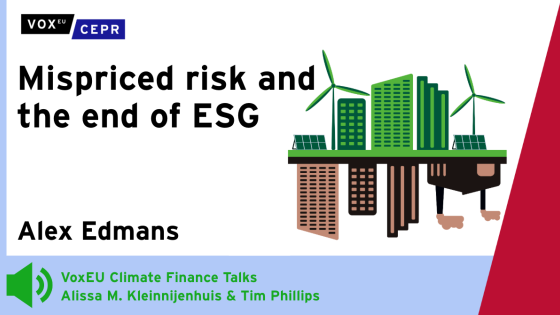Game theory suggests that attempts to negotiate an international environmental agreement, aiming to provide a global public good such as greenhouse gas emission reduction, are bound to fail (Barrett 1991, Carraro and Siniscalco 1992, Carraro and Siniscalco 1993). The UN Framework Convention on Climate Change (UNFCCC) nonetheless sought to find an agreement on legally binding targets for emission abatement. International conferences have been held each year since 1995. This year’s event, the 18th Conference, is from 26 November to 7 December in Doha, Qatar.
The previous 17 conferences have failed to reduce emissions. There were glimmers of hope in 1997 and 2001 when the Kyoto Protocol was, respectively, initiated and finalised. This international treaty, however, bound Europe and Japan to do nothing much and most other countries to do nothing at all. The US and Canada would have had substantial obligations under the Kyoto Protocol, but the US decided not to ratify the treaty and Canada withdrew after ratification.
Suspending game theoretic insights for the moment, let us assume that the first Conference of the Parties in Berlin in 1995 had a 50-50 chance of succeeding. If we further assume that the successive negotiations were independent tries, we can estimate the probability of success in Doha. The outcome of the series of negotiations follows a binomial distribution. Initialising with a Jeffrey uninformative natural conjugate Beta prior, Figure 1 shows the evolution of the expected probability and its one-sided 95% confidence bound over time. There is a 2.3% change of success in Doha, and we are 95% confident that the success probability is smaller than 22%.
Figure 1. The expected probability of negotiation success (solid line), its 95% confidence bound (dashed line) and the annual costs of climate negotiations (triangles).
An obvious critique of this calculation is that the negotiations would have changed over time. This is not the case. In the run-up to Doha, a number of organisations have released alarming reports. This has happened every year. The only surprise in 2012 was that the report by the World Bank was prepared by a former director of Greenpeace (Potsdam Institute for Climate Impact Research and Climate Analytics 2012). In the run-up to Doha, negotiators and climatocrats have called for legally-binding targets and timetables. Christiana Figueres, the Executive Secretary of the UNFCCC, has called for a “centralised transformation” of the energy sector (Kolbert 2012), echoing other calls for a world government to solve the climate problem (Biermann et al. 2012). The policy rhetoric in 2012 is much the same as it was in 1995.
Empty promises and token actions by politicians are not new and not limited to greenhouse gas emission reduction policy. The international climate negotiations are expensive, though. Almost 1,000 delegates attended in 1995 (Schroeder et al. 2012). This rose to almost 11,000 in 2005 and to 24,000 in 2009. The numbers have fallen somewhat since then, with only 16,000 delegates in Durban in 2011. 17,000 delegates are expected in Doha. Almost 7,000 person-working-years have been spent on the conferences alone.
But the UNFCCC organises more than one meeting per year. In 2012, 107 meetings were held, down from 111 meetings in 2011. Meetings were (much) rarer in the earlier years. I reckon that the UNFCCC has organised 682 meetings since 1995. Some of these were small. Negotiation meetings, now held once every quarter, attract thousands of participants. Assuming an average attendance of 200 delegates (one per country) and a duration of one week (including travel), 3,000 person-working-years have been spent at subsidiary meetings. Travel and subsistence for these meetings (say $2,000/person for a subsidiary meeting and $3,000/person for a conference) would amount to over $700 million. If delegates earn $30,000/year on average, the total costs of the UNFCCC meetings alone (ignoring preparation and overhead) would be $1 billion.
Figure 1 depicts the estimated cost per year. Recently, over $100 million per year was spent in fruitless negotiations. This is not a large sum of money, but Figure 1 suggests that ever more effort has been put into an increasingly obviously hopeless venture. This seems foolhardy.
Alternatives have been suggested, and it is time they are taken seriously. Bradford (2008) points out that other global public goods are provided through voluntary contributions, often bolstered by international jamborees where countries pledge their contributions and review those of others. Tol (2010) argues that this is made easier by the international standards on emission monitoring and the international flexibility instruments through which countries and companies can invest in greenhouse gas emission reduction elsewhere. Having flogged, ever harder for 18 years, the dead horse of legally binding emission targets, the UNFCCC should close that chapter and try something new.
References
Barrett, S (1991), "Economic Instuments for Climate Change Policy", in Responding to Climate Change: Selected Economic Issues, OECD, Paris.
Biermann F, K Abbott, S Andresen, K Baeckstrand, S Bernstein, M M Betsill, H Bulkeley, B Cashore, J Clapp, C Folke, A Gupta, J Gupta, P M Haas, A Jordan, N Kanie, T Kluvankova-Oravska, L Lebel, D Liverman, J Meadowcroft, R B Mitchell, P Newell, S Oberthür, L Olsson, P Pattberg, R Sanchez-Rodriguez, H Schroeder, A Underdal, S C Vieira, C Vogel, O R Young, A Brock, and R Zondervan (2012), "Navigating the Anthropocene: Improving Earth System Governance", Science, 335, (6074), pp. 1306-1307.
Bradford, D F (2008), "Improving on Kyoto: Greenhouse Gas Control as the Purchase of a Global Public Good", in R Guesnerie and H Tulkens (eds.) The Design of Climate Policy, MIT Press, Cambridge, pp. 13-36.
Carraro, C and DSiniscalco (1992), "The International Dimension of Environmental Policy", European Economic Review, 36, 379-387.
Carraro, C and DSiniscalco (1993), "Strategies for the International Protection of the Environment", Journal of Public Economics, 52, 309-328.
Kolbert, E (2012), "UN Climate Chief: Talks are making slow, steady progress", Environment 360, 21 November.
Potsdam Institute for Climate Impact Research and Climate Analytics (2012), Turn down the heat - Why a 4C warmer world must be avoided, World Bank, Washington, DC.
Schroeder H, M T Boykoff, and L Spiers (2012), "Equity and state representations in climate negotiations", Nature Climate Change (advance online publication), pp. 1-3.
Tol, R S J (2010), "Long live the Kyoto Protocol", VoxEU.org, 23 January.




